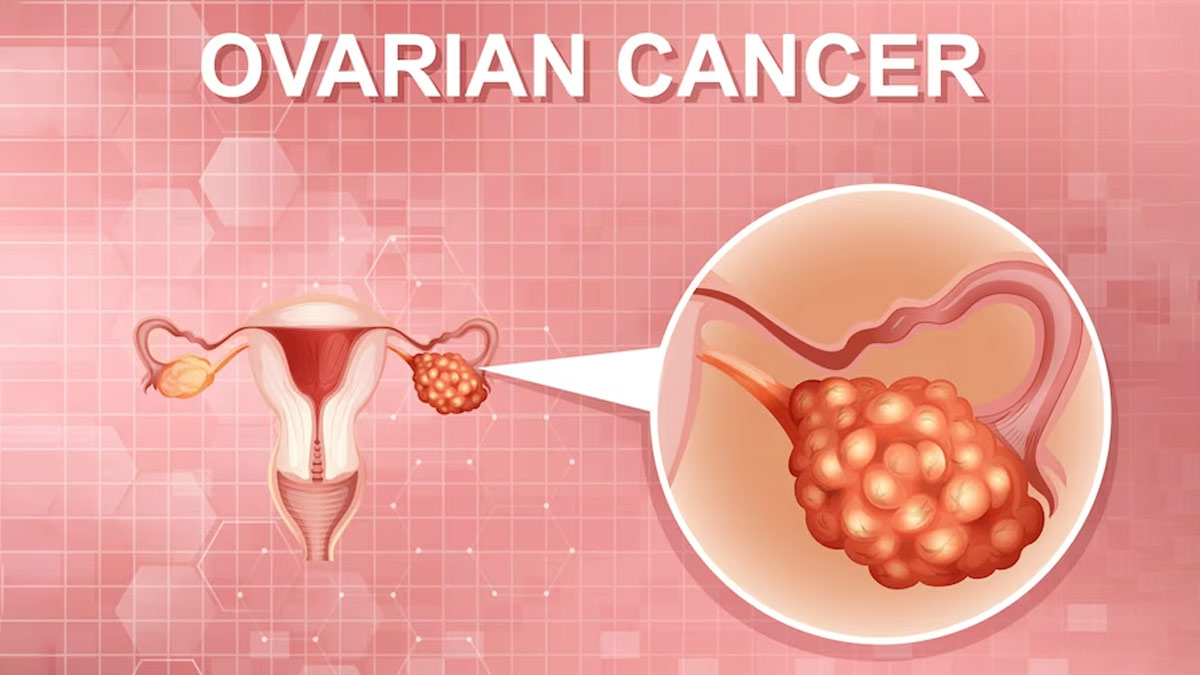
Ovarian cancer is known for its tendency to remain asymptomatic until it reaches an advanced stage. There have been recent breakthroughs in ovarian cancer screening and early detection strategies that offer new hope for at-risk groups of people.
Table of Content:-
We can guess the widespread nature of this disease from the fact that according to the American Cancer Society, 22,240 women were diagnosed with ovarian cancer in the United States in 2018, with 14,070 fatalities from this type of illness.
Dr Ranajit Kar, Sr. Consultant Radiation Oncology, HCG Panda Cancer Hospital, Cuttack, explains some advancements and their potential to reshape the landscape of ovarian cancer care.
Test For Ovarian Cancer
According to Dr Kar the two tests include:
CA-125 Test
“This is a blood test that measures the level of a protein called CA-125. Levels of this protein can be elevated in people with ovarian cancer, but they can also be elevated in people with other conditions, such as endometriosis or benign ovarian cysts,” said Dr Kar.
Transvaginal ultrasound (TVUS)
This is an imaging test that uses sound waves to create images of the ovaries and other pelvic organs. TVUS can be used to detect tumours on the ovaries, but it is not always accurate.
Also read: Different Types Of Polycystic Ovary Syndrome
As per Dr Kar, combination of CA-125 and TVUS can be more effective at detecting ovarian cancer than either test alone. There are a number of other factors that can increase a woman's risk of developing ovarian cancer, including:
- Age: The risk of ovarian cancer increases with age. Most cases occur in women over the age of 50.
- Family history: Women who have a family history of ovarian cancer are at increased risk.
- Genetic mutations: Certain genetic mutations, such as BRCA1 and BRCA2, can increase the risk of ovarian cancer.

Women who are at high risk for ovarian cancer may be offered more aggressive screening, such as:
- Serial CA-125 testing: This involves having the CA-125 blood test done every few months to look for changes in levels.
- Risk-reducing surgery: This may involve removing the ovaries and fallopian tubes, which can help to prevent ovarian cancer from developing.
Newer Screening Strategies
Researchers are constantly working on developing new screening strategies for ovarian cancer. Some of the most promising new approaches include:
- Circulating tumour DNA (ctDNA) testing: This test looks for fragments of DNA from cancer cells that have been released into the bloodstream. ctDNA testing is still under development, but it has the potential to be a more accurate and sensitive screening test than CA-125 or TVUS.
- Ovarian cancer biomarkers: Researchers are also developing new biomarkers, such as proteins and RNA molecules, that can be used to detect ovarian cancer. These biomarkers could be used in combination with other tests, such as CA-125 or TVUS, to improve the accuracy of screening.
Prevention of Ovarian Cancer
Genetic Counselling and Testing: “If you have a family history of ovarian cancer or carry certain gene mutations like BRCA1 and BRCA2, consider genetic counselling and testing. Knowing your genetic risk can help you make informed decisions about preventive measures, including surgery,” Dr Kar added.

Healthy Diet: Maintain a balanced and healthy diet. A diet rich in fruits, vegetables, and whole grains may lower your risk of ovarian cancer. Antioxidants and certain nutrients found in these foods may offer protection.
Physical Activity: Engage in regular physical activity. Regular exercise can help reduce the risk of various cancers, including ovarian cancer. Aim for at least 150 minutes of moderate-intensity exercise per week.
Maintain a Healthy Weight: Obesity is associated with an increased risk of ovarian cancer. Strive to maintain a healthy weight through a combination of a balanced diet and regular physical activity.
Smoking Cessation: If you smoke, quitting is essential not only for reducing the risk of ovarian cancer but for overall health. Smoking has been linked to an increased risk of various cancers, including ovarian cancer.
Also read: Polycystic Ovary Syndrome: Its Intricate Connection With Hairloss
Ovarian cancer identification is important for improving survival rates. Newer screening technologies, such as ctDNA testing and ovarian cancer biomarkers, are also being developed and may provide even more accurate and sensitive ovarian cancer detection in the future.
Also watch this video
How we keep this article up to date:
We work with experts and keep a close eye on the latest in health and wellness. Whenever there is a new research or helpful information, we update our articles with accurate and useful advice.
Current Version